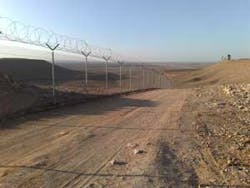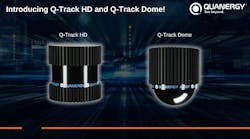World respected manufacturer of fibre optic intrusion detection systems, Future Fibre Technologies, has launched Secure Zone, a new zone-based perimeter protection system, which has been specifically designed to deliver the lowest possible cost of ownership while maintaining FFT’s enviable record for world leading protection technology.
Secure Zone is a mid range derivative of FFT’s proven flagship product, Secure Fence and is designed to fill a need in the market for a highly reliable yet cost-effective zone based intrusion detection solution.
This new product is equipped with FFT’s patented ARaD technology to overcome the traditional problems of nuisance alarms that are so common with current solutions. The technology uses signature recognition and advanced learning algorithms to “know†the difference between an environmental nuisance alarm and an attempted intrusion.
Alec Owen, International Client manager at FFT, says the company has developed Secure Zone at customers’ requests.
"Secure Zone has been developed to offer customers the best possible protection at the lowest possible cost of ownership," Mr Owen says. "By configuring the system so there are16 independent hardware zones, each up to 500 metres, in a single unit and by making installation considerably easier, we can deliver superior value-for-money."
Mr Owen says his company expects strong demand from those responsible for protecting airports, military bases, Government facilities, as well as energy infrastructure facilities such as oil refineries, petrochemical plants and power plants.
Simple and intuitive to use, Secure Zone has the ability to interface and activate CCTV systems, lighting, gates, email, plus a broad range of external devices and systems.
The area or zone in which an alarm is triggered is instantly displayed, and the event is automatically logged into a secure database. An alarm signal is then sent via dry contacts to a high level command and control system, CCTV camera system, or other external monitoring.
The low cost fiber optic sensor cable is easily attached to a fence to detect intrusion attempts. The system can be configured so that if the cable is cut in one zone, the remaining 15 zones continue to operate normally.
Secure Zone requires no electronics or power in the field, and it is easy and economical to install or expand. There is no field maintenance, and the fiber optic cable is unaffected by RFI, EMI, lightning or storms.
Its fibre optic connections can be all mechanical, so no special fibre optic skills are required, making installation even easier for systems integrators.
The system can be configured to allow up to 6 km insensitive lead-in, with zone lengths of up to 500 metres, for a workable solution and maximum value for money. A further benefit is the location of the controller in a security post or building, rather than on the fence line.
Since 1994, FFT has successfully positioned itself to be the technology of choice for intrusion detection applications, including perimeters, walls, fences, networks and buried pipelines.
Alec Owen says his company is committed to an extensive and on-going R&D program to continue to respond to customers needs.
"We are focused on not only enhancing the performance of our existing intrusion detection products but on developing new products with the usability, versatility and capabilities to match evolving market demands," Mr Owen says. "The launch of Secure Zone is testament to our commitment to developing systems that continue to meet real-world customer needs."
The company has experienced significant growth over recent years as the market has begun to understand the truly unique capabilities of FFT’s next generation fibre optic sensing technologies.
The company’s products are seen globally as the technology of choice for perimeter applications, pipeline monitoring and communications/data network security, with hundreds of systems and millions of metres of intrusion detection being deployed globally.


